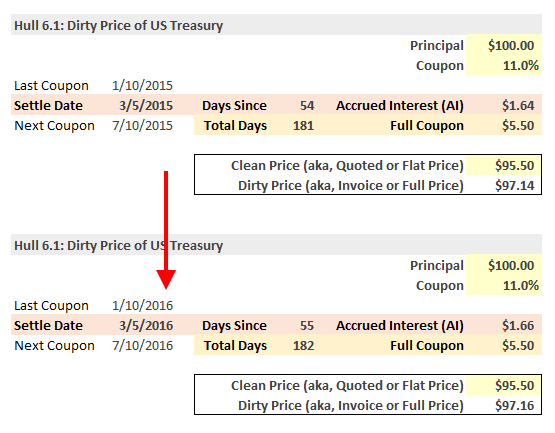gargi.adhikari
Active Member
In reference to R19.P1.T3.FIN_PRODS_HULL_Ch6_Topic: DAY_COUNT_CONVENTIONS :-
Hi,
I was revisiting this topic and have some questions on the example illustrated below. We are using the Day Count Convention= Actual/Actual. The Days Since is shown to be 54 between Jan1, 2012 & Mar 5, 2012.
2012 is a Leap year- should we not consider and count Feb having 29 days instead of 28 in cases where we have a Leap Year..? So that way we would have 21 days of Jan ( Jan 11- Jan 31st) + 29 days of Feb ( 2012 being a Leap Year ..?) + 5 Days of March( Mar 1st To Mar 5 ) = 55 Days instead of 54 Days..?
Much gratitude for any insight on this.

Hi,
I was revisiting this topic and have some questions on the example illustrated below. We are using the Day Count Convention= Actual/Actual. The Days Since is shown to be 54 between Jan1, 2012 & Mar 5, 2012.
2012 is a Leap year- should we not consider and count Feb having 29 days instead of 28 in cases where we have a Leap Year..? So that way we would have 21 days of Jan ( Jan 11- Jan 31st) + 29 days of Feb ( 2012 being a Leap Year ..?) + 5 Days of March( Mar 1st To Mar 5 ) = 55 Days instead of 54 Days..?
Much gratitude for any insight on this.



 Much gratitude
Much gratitude 
